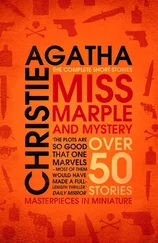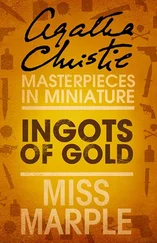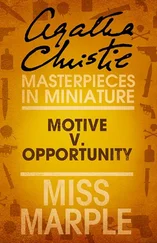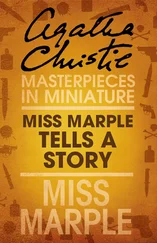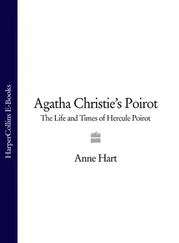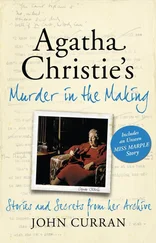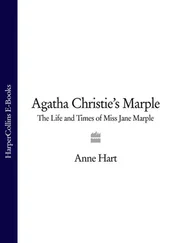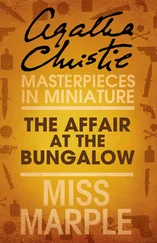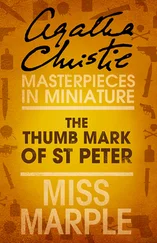At Gossington Hall, ‘Good, solidly built, rather ugly Victorian,’ lived the Bantrys, who were likeable and unpretentious. Colonel Bantry, bluff, ‘red-faced, broad-shouldered,’ was the principal magistrate of the district, read The Times , and defended the Empire. His wife, Dolly, who became one of Miss Marple’s closest friends, was a dear.
Old Hall was a big Victorian house surrounded by parkland and woods. These woods proved a particularly good place in which to set alibi-providing time fuses, bury incriminating evidence, and dig up rocks for Miss Marple’s Japanese garden. The deserted North Lodge of Old Hall had its uses as well. It was an excellent place from which to make anonymous phone calls.
Old Hall will always be remembered as the home of the odious Colonel Protheroe of The Murder at the Vicarage. In his day the front door of Old Hall was opened by a butler, while in the wings hovered a housekeeper, a parlourmaid, a cook, a kitchen maid, a valet, and a chauffeur. After Colonel Protheroe’s sudden demise Old Hall fell on hard times. Put up for sale, it proved unlettable and unsaleable until ‘an enterprising speculator had divided it into four flats with a central hot-water system, and the use of “the grounds” to be held in common by the tenants.’
At the crossroads, about midway between Old Hall and Gossington Hall, stood the parish church. ‘Our little church,’ the Vicar called it, and went on to add proudly that it had an interesting screen, ‘some rather fine old stained glass, and, indeed, the church itself is well worth looking at.’
Occasionally a handful of the inhabitants, usually newcomers, appear to have dabbled in faiths other than that of the Church of England: to have toyed with spiritualism, for example, or the Oxford Group (like young Ted Gerard, who owned up to embezzlement), or Wesleyanism (whose minister refused to let his child get her teeth fixed because it was the Lord’s Will if they stuck out). Generally speaking, however, most of the villagers were firmly, if not militantly, Church of England. As Miss Marple once put it, ‘in my own village, St Mary Mead, things do rather revolve round the church’; and indeed its parishioners, particularly the women, appear to have supported an impressive round of activities. There was the Women’s Institute, perpetually skirmishing with the District Nurse and the village schoolmistress, the WVS, and the Mothers’ Union; there was the Needlework Guild and the Sales of Work; there were the Boy Scouts, the Brownies, and the Girl Guides; there were the Choir Boys’ outings and the Boys’ Club cricket matches; there was the Society for the Propagation of the Gospel, the St Giles Mission, and the Bishop’s Appeal for the Deep-Sea Fishermen; there was the St John Ambulance, the Nave Restoration Fund, and the Church of England Men’s Society; there were committees to look after unmarried mothers, the workhouse, and the orphanage. The list goes on and on.
Collecting moral and financial support for all these worthy causes was an important social activity in itself. Appropriate small black book in hand, one could knock at any door, distributing gossip with the annual Armistice Day poppies and receiving back what often proved to be valuable pieces of information. Miss Marple found this a particularly helpful method of investigation in some of her more difficult cases. Of course, in collecting, as in so many aspects of life in St Mary Mead, unfortunate episodes did occur. Not soon forgotten was ‘the woman who came down here and said she represented Welfare, and after taking subscriptions she was never heard of again,’ nor Mrs Partridge, who appropriated to her own use seventy-five pounds of Red Cross donations.
Presiding, uneasily at times, over these various parochial activities was the Vicar of St Mary Mead. Over the years a number of clerics occupied this post, the most memorable of whom was the Reverend Leonard Clement, one of the most likeable men in Marpelian literature and, as the narrator of The Murder at the Vicarage , an author in his own right. While his irrepressible wife Griselda and his parishioners regarded him as hopelessly absent-minded and unworldly, ‘a gentle, middle-aged man [who] was always the last to hear anything,’ his writings reveal an unexpectedly astute grasp of village affairs. ‘At my time of life,’ he wrote, ‘one knows that the worst is usually true.’ One cannot help but suspect that much of this gentle Vicar’s vagueness and detachment was a defence mechanism adopted against the vagaries of his flock. He had to endure the fluttering parish ladies who quarrelled over the church decorations and gave him bedsocks for Christmas; an organist who was ‘very peculiar indeed’ over young girls, succeeded by another who objected to the choirboys sucking sweets; a handsome young curate who proved embarrassingly attractive to the parish ladies, followed by another whose High Church ‘becking and nodding and crossing himself enraged the parishioners almost as much as his embezzlement of their Sunday Evensong offertories; the unpopular churchwarden who was found shot in the head in the Vicar’s own study. No one could say that St Mary Mead was an easy incumbency.
In his personal life, the Vicar appears to have wrestled constantly with temptation: his desire to read the latest detective novel, for example, instead of preparing next Sunday’s sermon; his continual longing for a decent meal; above all, his unseemly infatuation for his young wife, Griselda, who was indeed the antithesis of the traditional vicar’s wife. She claimed to have chosen her middle-aged husband over a ‘cabinet minister, a baronet, a rich company promoter, three subalterns, and a n’er-do-well with attractive manners’ and never to have regretted her decision: ‘It’s so much nicer to be a secret and delightful sin to anybody than to be a feather in his cap.’ As a housekeeper she was a disaster. ‘Bad food and lots of dust and dead wasps is really nothing to make a fuss about,’ she once said, and, it must be admitted, none of these things seems to have deterred either the spinster brigade or the tennis-party set from making Griselda’s untidy drawing room their rallying point.
Besides Miss Marple, the Clements had two other neighbours: Mrs Price Ridley and Dr Haydock. Mrs Price Ridley was a ‘rich and dictatorial widow’ whose immaculate house stood on the other side of the vicarage wall. Though not a spinster, she was an important member of the tea-and-scandal group and, to the Vicar’s secret regret, a devout churchgoer. On the other side of the Clements lived Dr Haydock, the physician and police surgeon. ‘Haydock is the best fellow I know,’ wrote the Vicar, and Colonel Melchett said of him, ‘He’s a very sound fellow in police work. If he says a thing, it’s so.’
From time to time strange birds of passage alighted in St Mary Mead, causing no end of a stir. Mention has been made of the bogus archaeologist who came to dig in the grounds of Old Hall. Other examples of this phenomenon were Mrs Spenlow, a lady with a past, who was found on her hearthrug, strangled by a tape measure, shortly after coming to live in St Mary Mead; Rex Stanford, an inoffensive young architect who was framed for a murder within a month of his arrival; and flamboyant Basil Blake, who came down to live in one of the sham Tudor houses on the new building estate, bringing with him noisy weekend guests and a permanently resident platinum blonde.
Two other strangers who set the dovecotes fluttering, and whose cottages appear on The Murder at the Vicarage map, were Lawrence Redding and Mrs Lestrange.
‘He’s a very good-looking young fellow,’ said Miss Wetherby of Lawrence Redding. ‘But loose,’ replied Miss Hartnell. ‘Bound to be. An artist! Paris! Models! The Altogether!’ The Vicar kindly lent his garden shed as a studio to this young artist, and in it all Miss Hartnell’s worst prophecies were realized. But no one, not even Miss Marple, could learn much about the appropriately named Mrs Lestrange, and if her ex-husband had not died under mysterious circumstances, her secrets would probably have been safe to this day.
Читать дальше


